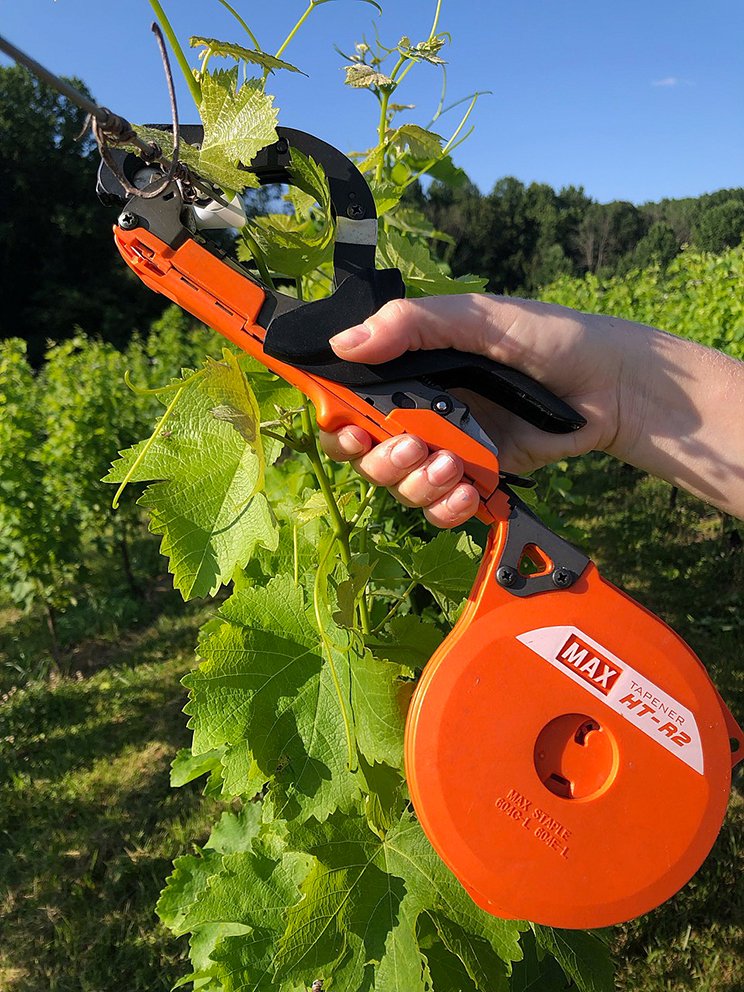Linden Update | June 7, 2022
The row on the left has been shoot positioned, but not (yet) the row on right.
Green Work
We’ve had a lucky weather streak in the vineyard. The vines were in full bloom during the dry warm days of this past weekend. We anticipate a successful pollination and an ample crop. We’ll know for sure in another week or two when individual grape berries begin to form.
June is an extremely active month for winegrowers. Green work is at its peak and the timing is critical. Green work refers to the hand work that goes into making sure that the vine’s shoots, leaves, and clusters are uniformly positioned and have just the right exposure to sun and wind. We used to call this canopy management, but green work sounds a lot sexier. The work is actually pretty backbreaking, but also satisfying. The two tasks that consume us now are shoot positioning and leaf removal. These are all done at Linden by hand. Mechanization has found its way into larger, flatter vineyards, but our undulating hillsides and obstinance keep our hands on the vines and feet on the ground.
Action shot of Samantha Law Wilde shoot positioning and tying vines.
A very clever tool that allows us to attach the vine shoots to the trellis wire in seconds.
Shoot positioning
Shoot growth is exuberant in June. We have about 30,000 vines here at Hardscrabble. Each vine has between eight and twelve shoots. Each shoot needs to be tied to or tucked into the trellis wires. You can do the math. It sometimes feels overwhelming. The timing is equally important. In May the shoots are fragile and break when handled. By mid-June the shoot tendrils have already attached, but not often in an acceptable position. Detaching them and then repositioning them is arduous and time consuming. Now is the window.
Before leaf removal: where are the clusters?
After leaf removal: Tiny clusters can now develop under ideal conditions
Fruit zone leaf removal
Our vines are trained so that all the clusters are positioned in a row about 30” from the ground. This is called the fruit zone. If the developing clusters are buried in a mass of shoots and leaves, the clusters could end up with mildew, rots and under ripe flavors. So we open up the fruit zone by removing some of the vegetation (mostly leaves). This is done by hand. Precision is paramount. There needs to be good air flow to keep the clusters dry after rain or heavy dew. However, with our warming climate we can’t allow too much sun on the clusters. The heat can burn the skins and change the flavor profile. “Dappled sunlight” is the goal. We only work on the east side of the rows as the morning sun is gentler than the hot afternoon sun. The leaf directly above each cluster must be left in place as it serves as an umbrella to shade the cluster.
These long days of summer can be maddening. 15 hours of working light can push us and make us feel guilty if we are not out doing our green work. Shorter days are just around the corner.
Subscribe to monthly Linden Updates for the latest vineyard and cellar information
Linden Vineyards / Learn More / Latest at Linden | Update: June 7, 2022





